How to use a pizza stone – create perfectly crisp authentic Italian pie crusts every time
Learn how to use a pizza stone to create a base that beats pizzerias and rivals Italian restaurants that make this Roman specialty

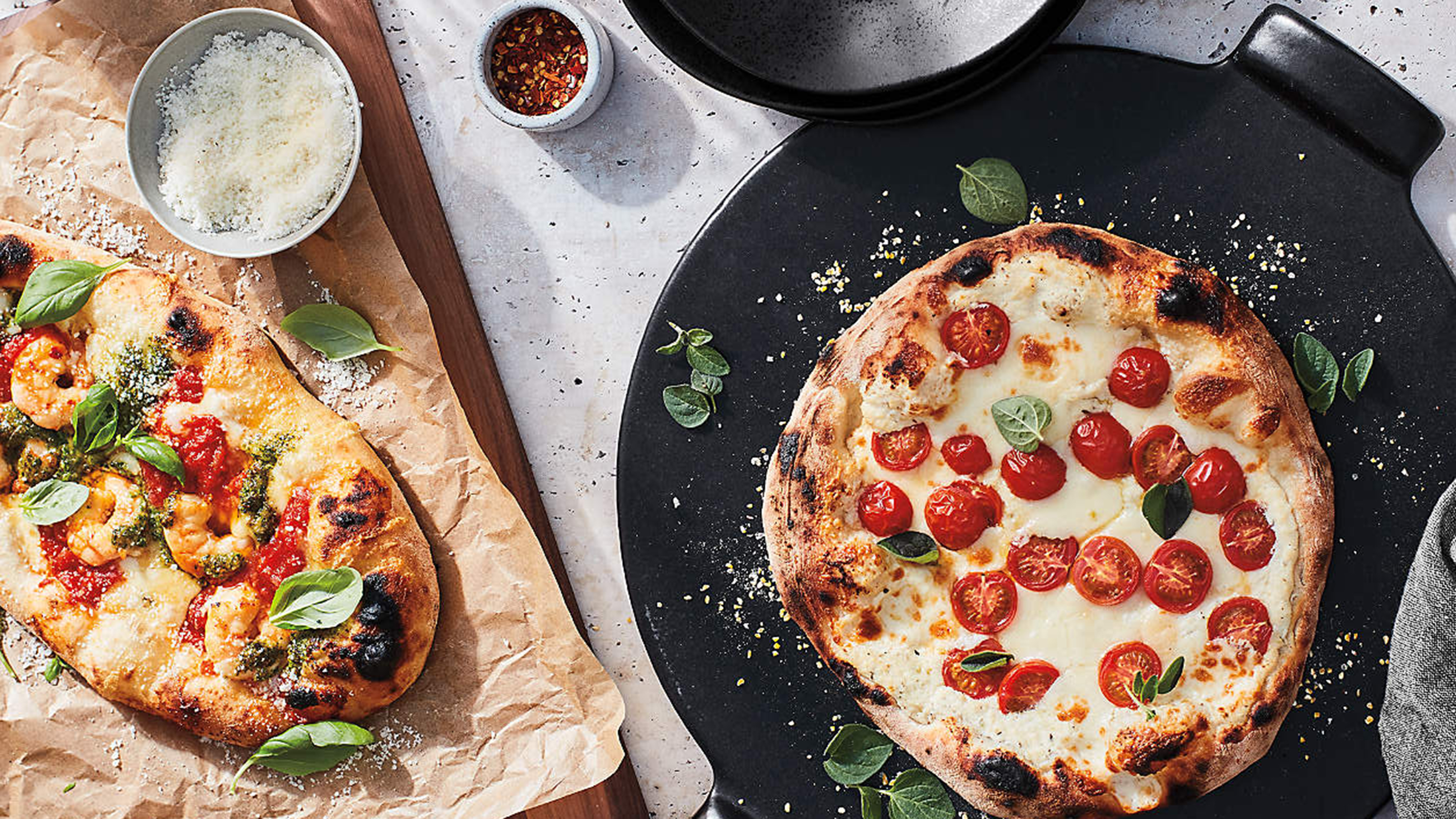
Want to know how to use a pizza stone properly? Although the best pizza ovens (indoor or outdoor) can be quite an expensive investment (initially), making pizzas with bread flour, water, yeast and salt costs next to nothing when you think of it. Especially considering the eye-watering mark-up your fave independent eatery or food delivery app go-to add on to this cheap, Mediterranean eat.
But unlike the chain or artisan recipes that are passed down from one generation to the next, everyday is a create-your-own experience if you have the goods to make pizza at home. So you can create a bespoke stone-baked meal without the extra add-ons charged to your bill.
Using a pizza stone (also known as a baking stone) essentially creates a stable surface for your dough to sit on, while removing extra moisture from your elastic paste of grain and H₂O. An essential part of recreating your restaurant favorite at home.
It also retains heat and distributes it evenly via its porous surface – if you've watched a famous British TV baking show, you'll know that no once likes a soggy bottom. It's best to keep a continuous blast of heat on your homemade pizza if you want to stretch to crisp and professional results.
Why should you use a pizza stone?
First of all, it's probably important to know what a pizza stone is and how investing in the best pizza stone you can buy will give you a beautifully crispy pizza base, devoid of any sogginess.
As well as being suited to use on the best BBQ (for a smokey finish with charred edges) you can also use one inside, popped into your conventional oven.
So who better to ask about using a pizza stone in your oven than Clare Edwards, home economist at Smeg, who can explain how this kitchen gadget can revolutionize this Roman classic.
Get small space home decor ideas, celeb inspiration, DIY tips and more, straight to your inbox!
She says: 'Italians are well-known for their pizza, and what the pizza stone allows you to do, is to create the authenticity of a traditional pizza stone oven and cook pizza within four to six minutes.'
If you wonder if you can make a really good pizza at home without a specialist pizza stone (or oven with one) then the answer is probably, no.
'To really enhance your cooking experience, a pizza stone is essential and is key to providing a perfect pizza,' says Annabelle Luce, UK Communications Manager for ManoMano.
'There are several reasons behind this, however the biggest factor is that the stone holds heat, allowing the pizza to evenly cook. When cold food such as an uncooked pizza is placed on top of it, as long as the stone has been pre-heated, it can help balance out the temperature on both sides, ensuring not one side is too burnt or underdone.'
'Better yet, by immediately transferring the pizza onto a hot platform, the crust gets crispier, providing a more authentic Italian style.'
Enough on why you should make pizza at home with a pizza stone. How do you use one?
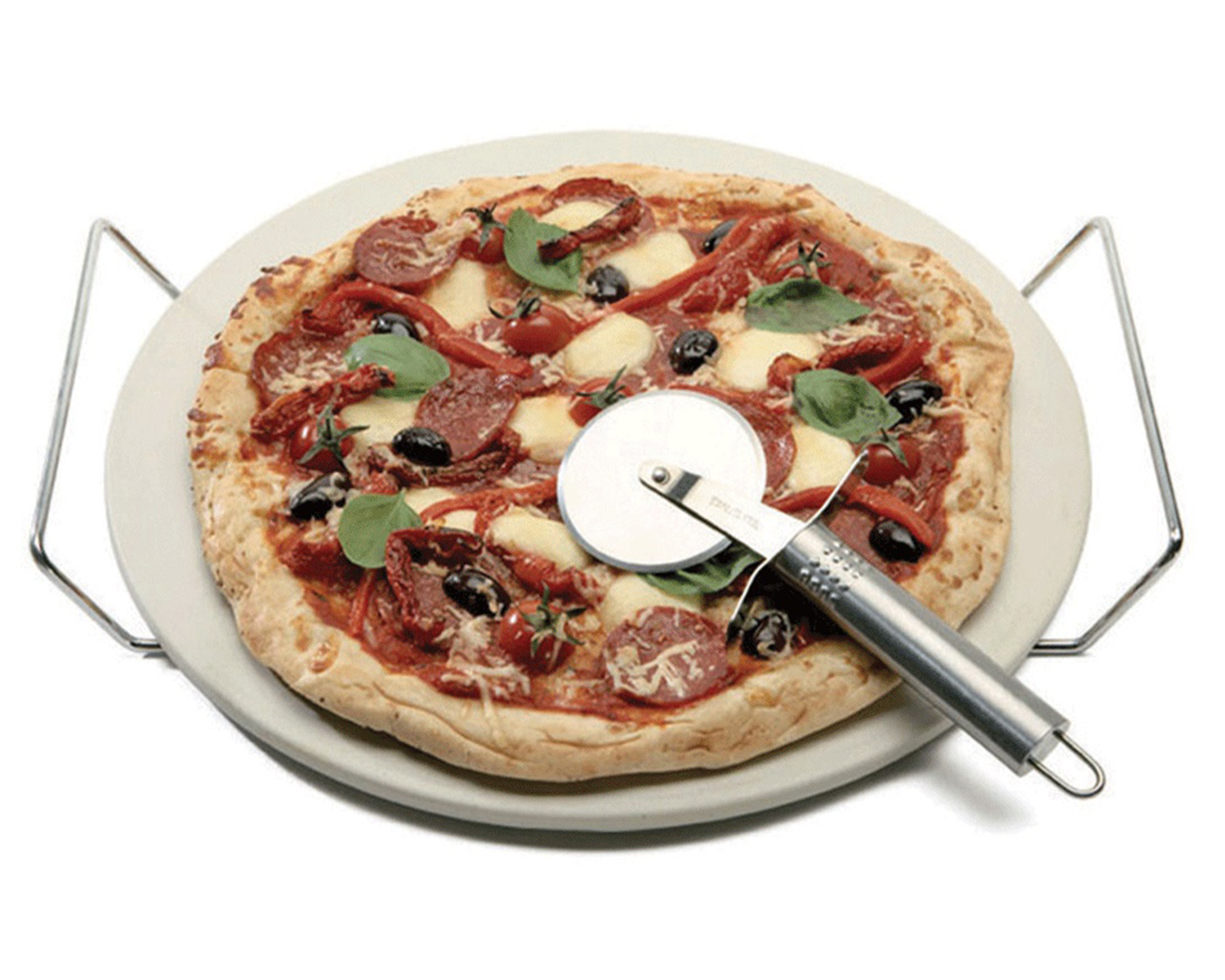
How to use a pizza stone (in a conventional oven)
The process couldn't be easier. You just put the stone in the oven to heat while you prep your pie. Once you have spent time on your dough, and shaped it tomato sauce and cheese, or meat can be added on top of the pizza. It then needs sliding onto the warmed stone to cook.
Meats such as Parma ham only need a few minutes. Finally, drizzle some oil over the cooked pizza along with a few basil leaves and it is ready to be eaten!
Whatsmore, pizza stones can also be used to cook other breads such as pitta bread or chapati, or quiches and flans. Casseroles can be placed on the stone to cook from the base. They can of course be used for frozen or part-baked pizzas, too.
You will need:
- An oven (take a peek at our best oven picks if you're looking to buy a new one)
- An oven rack
- A pizza stone
- A pizza peel
- Timer (optional if you have a clock or appropriate oven setting)
- Oven gloves
How to:
- Preheat your pizza stone: Begin to heat the pizza stone in the oven at 280°C/540°F, whilst you prepare the pizza. Always put the stone in a cold oven then turn on to heat both together.
- Let the stone sit in the hot oven: After the pizza dough has been rolled and stretched, with toppings added, use a pizza peel to place it on the preheated pizza stone. Dust your peel with semolina to help ease the pizza onto the stone. Work quickly to avoid losing heat.
- Cook the pizza: Leave the pizza to cook and check on it (through the glass door if possible) after about four minutes. Smeg’s current pizza stone can reach highs of 350°C/660°F and will cook the pizza from the base within 4–6 minutes but you may need up to 10 minutes for the pizza to be cooked to your liking. It is ready when the crust is browned and bubbling and the cheese just starting to colour.
- Remove the pizza from the oven: You can do this with your pizza peel, or use your oven gloves to carefully slide it onto a suitable heatproof surface.
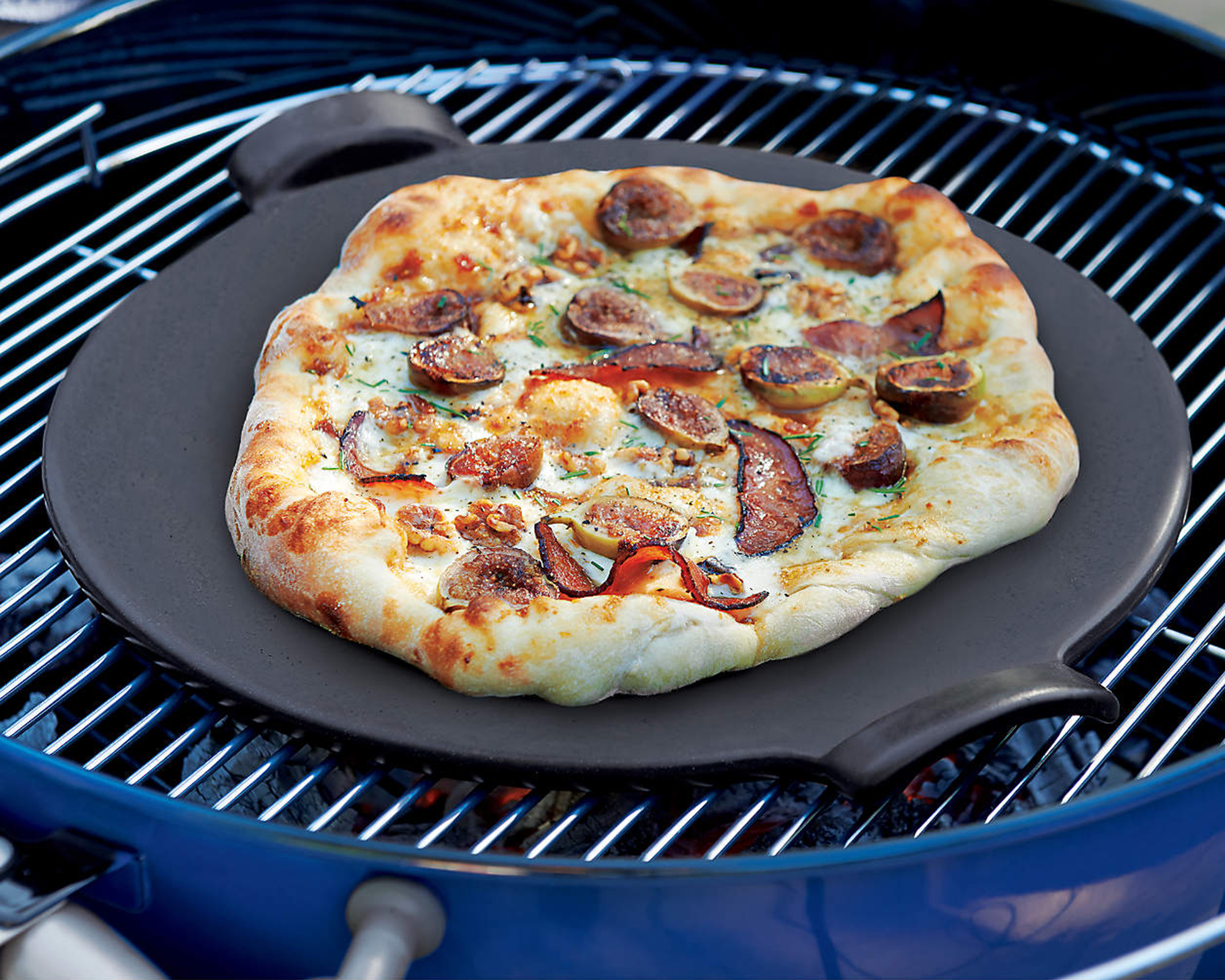
How to use a pizza stone on the BBQ
Thought your humble barbecue just charbroiled meats, sausage and corn-on-the-cob? Our minds were blown when we learned how to BBQ a pizza using a pizza stone. And, it happens to be on our list of the best BBQ tools and accessories too.
'Simply get the pizza stone piping hot on the grill and add your fresh pizza dough before closing the lid and allow it to cook for a few minutes. Once you open up you'll have perfectly cooked pizza.' says Millie Fender, small appliances and cooking editor, Real Homes.
The key thing here is knowing how to light a bbq correctly. It's absolutely imperative that you allow your cooking appliance to get as hot as possible, because your pizza stone is reliant on that temperature for the most tasty and authentic open pie texture. Once the grill is lit, get the stone on to allow it to heat properly and avoid thermal shock. Feed the grill beneath the stone to maintain a good temperature throughout.
This method of cooking pizza is so good, even retail chain Crate and Barrel cooks their pizzas on grills. They say 'Chefs slide pies directly onto piping hot grills. The result is a perfectly charred crust with just the right amount of chew.'
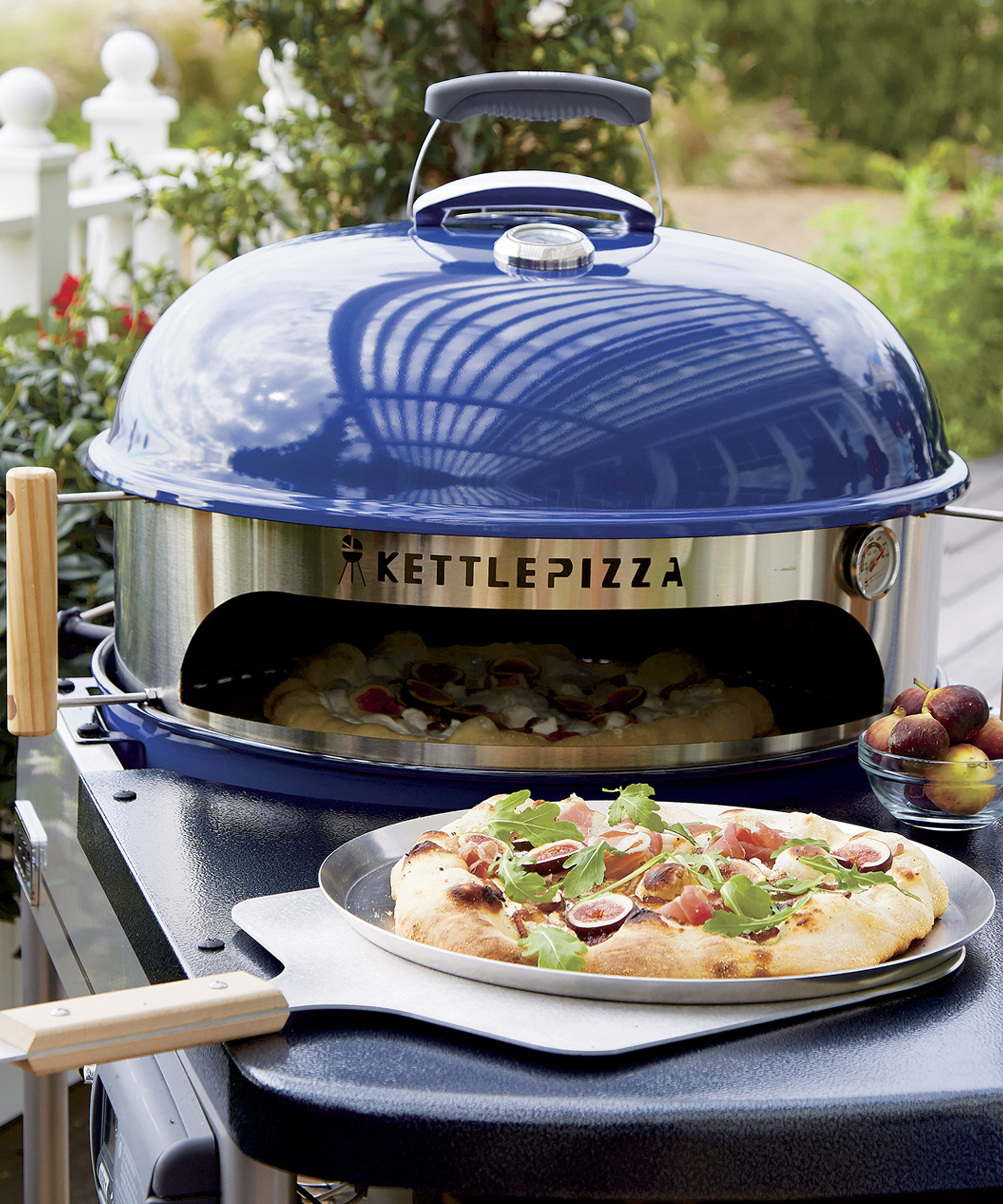
We spoke to Andrew Lovell, product manager at LANDMANN about how to get a bubbly base on your BBQ.
You will need:
- A BBQ
- A pizza stone (such as LANDMANN's modulus pizza stone)
How to:
- Before you do anything else, it’s important to check what your stone is made from. Cordierite stones are extremely resistant to thermal shock so placing them straight onto on a screaming hot barbecue isn’t a problem. Cheaper ceramic or clay stones may crack if you do this, so you need to heat them up slowly.
- If you have a modulus circular grill section, remove it and put your modulus pizza stone down in its place. If you are using a standard gas or charcoal grill, then simply place the stone on the grill.
- Once your stone is in place, crank up the heat to full on all the burners (or get your charcoal grill extremely hot) and close the lid. If you have a ceramic or clay stone, you’ll need to do this slowly instead.
- To get the best results, leave the stone on the barbecue at full heat for at least 15 minutes, ideally nearer to 30 minutes, before cooking. This will get the stone piping hot and ready to serve up the perfect crispy base and fluffy crust.
- Now it’s time to place your pizza into the barbecue. If you prepare your stone well and have it at a high temperature, you shouldn’t need to add anything at this point to stop your pizza from sticking.
- Put your pizza onto the stone, opening the lid for as little time as possible. Once it’s in the right place check your burners are still on full, if using gas, and close the lid.
- You won’t need to turn your pizza as the heat will be spread evenly under the hood, so just leave the barbecue to work its magic. Your fresh pizza will be ready to enjoy al fresco in 7-8 minutes.
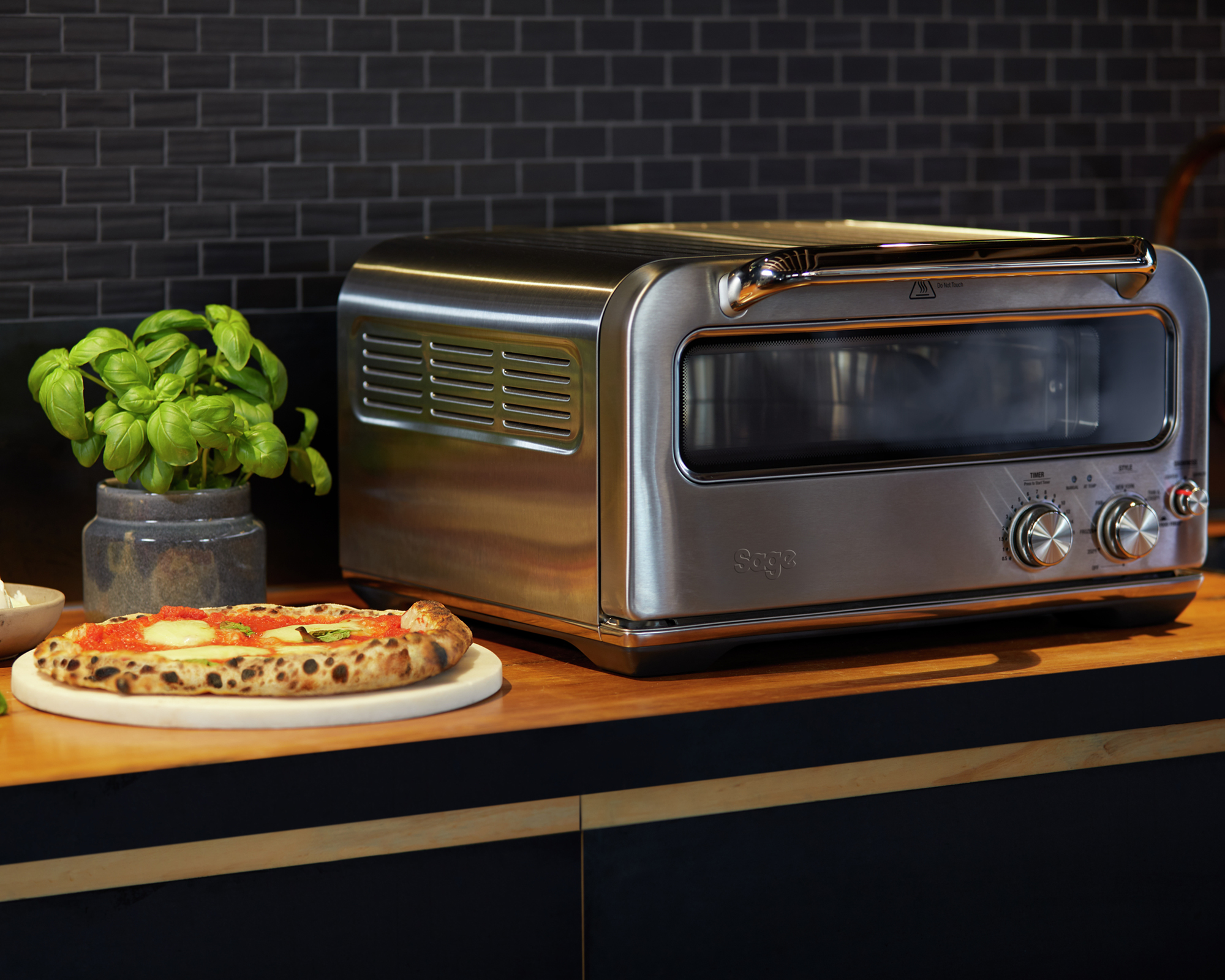
How does a pizza stone work?
Smeg's top tips on using a pizza stone
Don't overload your pizza base with ingredients: this will create a wet base and reduce the overall temperature of your pizza stone. Consequently, this will stop your pizza stone from heating up and forming that perfectly crispy and crunchy base. This includes everything you put on your dough, including olive oil, Passata (crushed tomatoes), and your fave toppings too.
The benefit of a pizza stone over a baking sheet is that it retains heat and extracts moisture.
'You can think of pizza stones/baking steels as thermal batteries.' explains Sandra Duncan, sales training and experience manager UK & EU at Sage Appliances.
'They get ‘charged up’ by placing them in your oven and preheating them. Because the ceramic stones are quite poor conductors of heat, they take a long time to fully preheat or ‘charge’, but this is actually a good thing because they hold onto that thermal energy very well.'
'This can help maintain stable baking temps but more importantly, that energy can be rapidly released through conduction when you place a pizza onto the stone. The energy in the stone is transferred into the dough and helps the pizza cook quickly.'
How hot must a pizza stone be to cook pizza?
Pizza needs to be cooked quickly, at a high temperature.
Declan Kingsley-Walsh, MD at Morsø UK says, 'When using a pizza stone, it is important to heat the stone thoroughly before use. For pizza making, the stone must be very hot, and there must be living flames. The optimal temperature of the stone on which you bake the pizza is 250–300°C/480–570°F. Place the pizza directly on the baking stones and turn it at short intervals for even baking. After just a few minutes you will have a delicious pizza.'
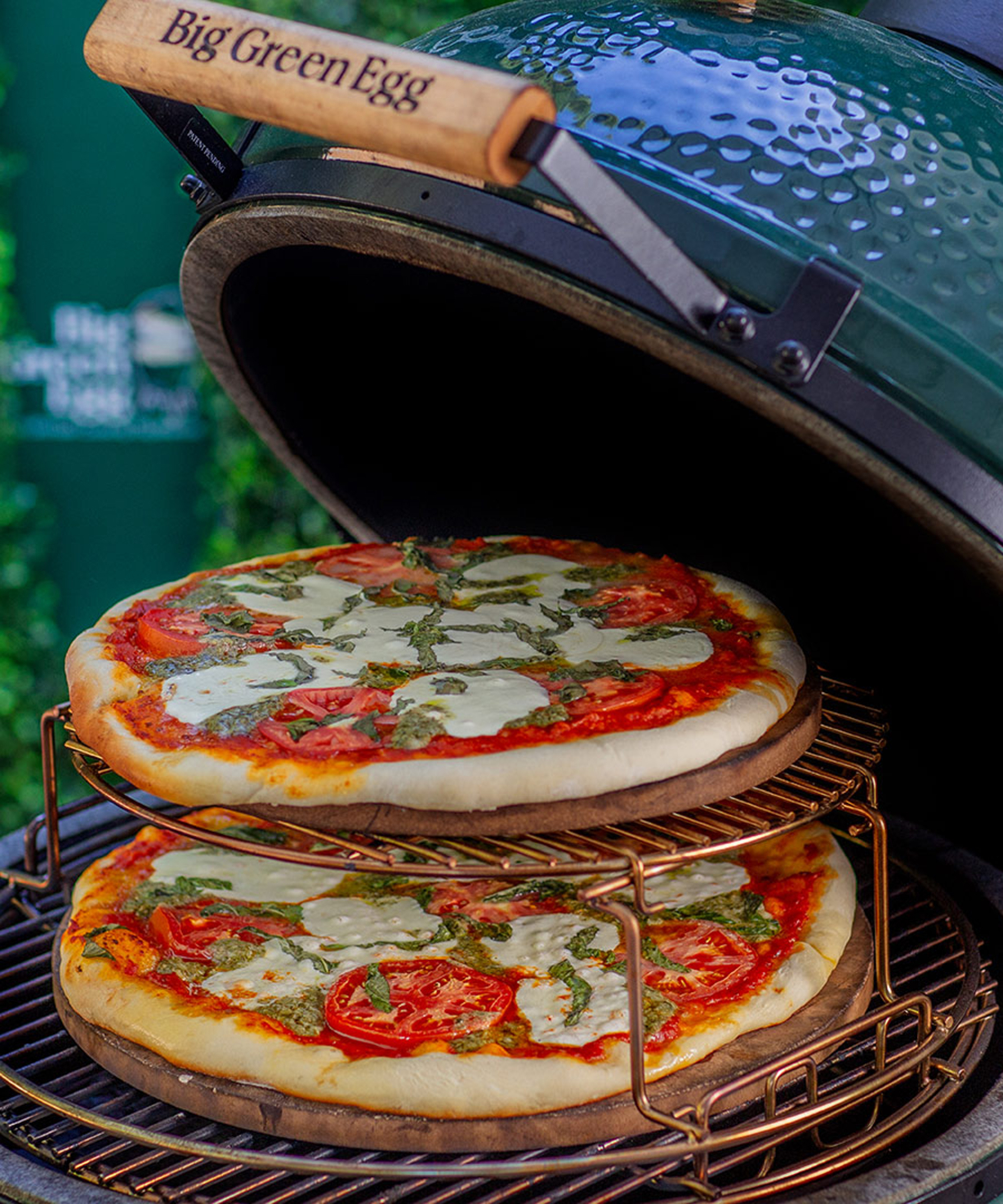
What is a pizza stone made from?
The pizza baking stones we've seen have either been crafted from cordierite (a mineral from igneous rocks), ceramic, steel or clay and come in a variety of shapes and sizes so you can manipulate your stretchy pizza base to fit the stone to size.
Though we briefly touched on the fragility and care you should take in not taking your baking stone from cool to hot temperatures to quickly (and vice versa) – not all pizza stones are made equally. And so it might pay dough-shaped dividends to pay a few extra dollars for a premium pizza stone.
The Emile Henry pizza stone, available from Amazon is made from a proprietary clay mixture and patented technology, and can go straight from fridge or freezer to oven or grill without cracking. It's dishwasher safe, and has a 10-year guarantee, so you can keep popping out those pizzas time and time again.
Is a pizza stone better than a pizza oven?
While you can get amazing results with a pizza stone at home, if you need quicker and more reliable cooking, you might want to look at a pizza oven instead.
Sandra Duncan, sales training and experience manager UK & EU at Sage Appliances says, 'An important thing to note is that the pizza stone is really only going to get as hot as your oven will allow it to. If your oven ‘maxes’ out at 250°C/480°F, your stone is only going to get to a temperature close to that. It will effectively try to reach a point of equilibrium with your oven. That’s why, even with very good pizza stones, it’s very difficult to achieve Neapolitan pizza in a poor home oven – they just don’t get hot enough.'
'The Pizzaiolo is the first domestic benchtop oven to hit 400°C/750°F and cook an authentic wood-fired style pizza in just two minutes. It replicates the three types of heat generated by a brick oven – conductive, radiant and convective. Our Element iQ system also replicates the ideal baking environment for New York, pan, thin and crispy and frozen pizzas.'
'The independently-controlled, dynamic deck has been designed to sit directly above responsive incoloy heating elements. The natural cordierite stone is heated quickly and evenly to maintain the correct temperature, cooking the pizza base to the desired finish, with the right amount of char for the classic wood-fired finish.'
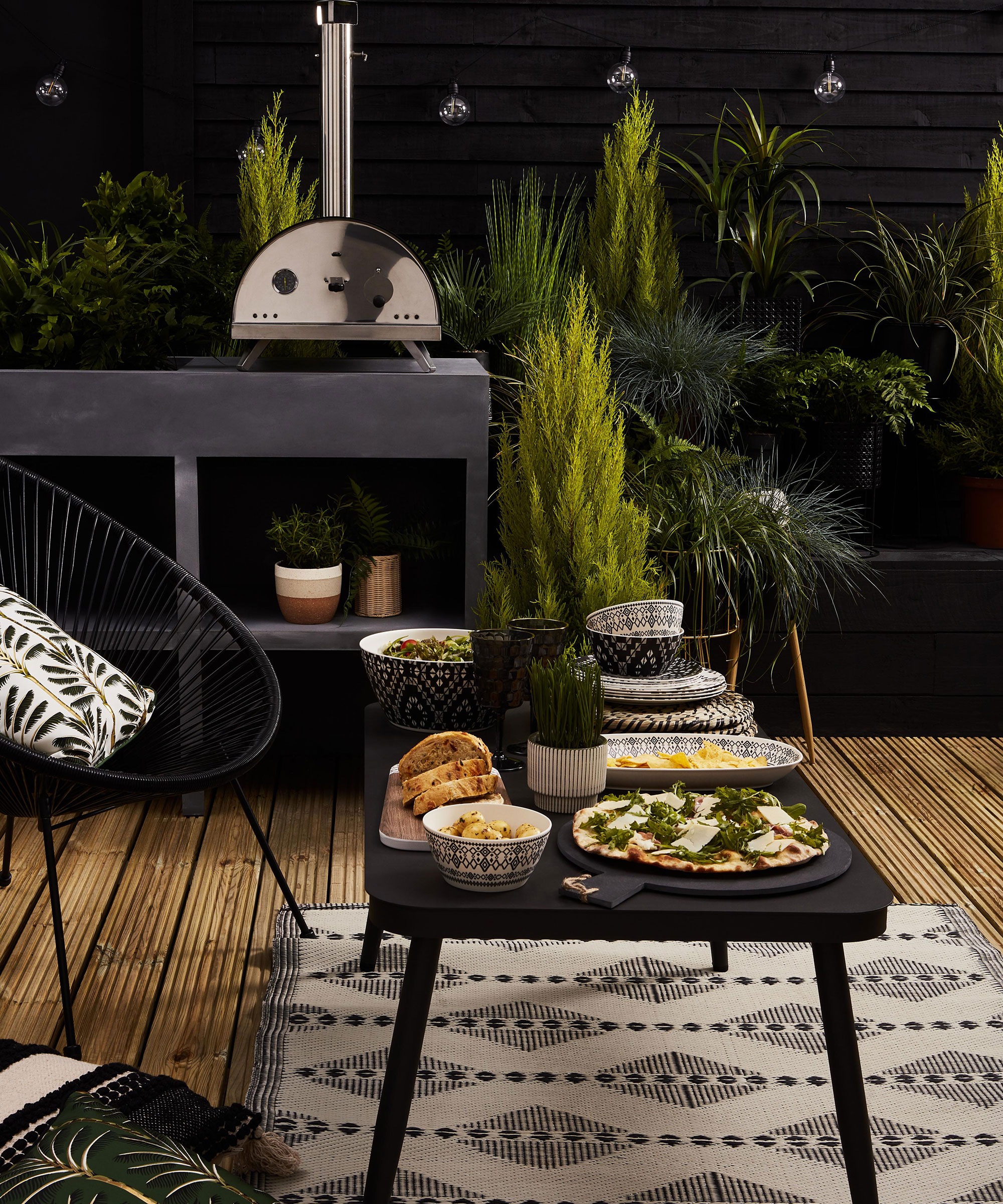
How to look after your pizza stone
Keep your pizza stone somewhere clean, dry and preferably with low humidity levels. Never soak or overwet your pizza stone as the porous surface will absorb water. Always allow any water to dry away completeley before using the stone again or it could cause damage and cracking.
Once you have finished cooking your pizza, don't turn the oven off. Leave it on for 10 to 20 minutes to cook any food residue off the pizza stone. In this time, it will likely burn and turn to an ash that is much easier to remove than molten ingredients.
Then, allow the pizza stone to cool in the oven. Next day, or when the stone is completely cooled, removed from the oven and wipe over with a lightly damp cloth. If anything is burnt on, use a brush to lift it. For more, read how to clean a pizza stone.
Is a pizza peel the same as a pizza stone?
No, a pizza peel is a completely different tool to a pizza stone. The peel essentially helps you to 'peel' it off your work surface and transfer it to the hot pizza stone. You don't necessarily need a peel, but it will make your raw dough easier and safer to move about.
These long handled kitchen apparatus can be formed of wood, bamboo or metal so it's completely up to you which one you choose (you might want to use natural materials in a traditional kitchen for example). But we like the look of the American Metalcraft Aluminum pizza peel with wood handle that we found on Amazon. It has the best of both worlds, is relatively cheap, and comes with over 1,650 good reviews.
Having a pizza peel also adds extra wow-factor and theater in the kitchen if you happen to be entertaining guests and serving pizza. Looks much better than a make-shift baking sheet situ, or removing your finished product with a plate or chopping board – trust us!
What else can a pizza stone be used for?
These cooking stones can be used for more than just pizza. You can bake other breads on them, or use them under a roasting tin containing meat or veggies to help spread the heat more evenly.

Hi, I'm the former acting head ecommerce editor at Real Homes. Prior to working for the Future plc family, I've worked on a number of consumer events including the Ideal Home Show, Grand Designs Live, and Good Homes Magazine. With a first class degree from Keele University, and a plethora of experience in digital marketing, editorial, and social media, I have an eye for what should be in your shopping basket and have gone through the internal customer advisor accreditation process.